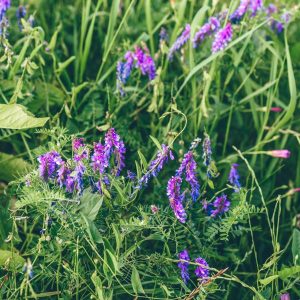Description
How to use
August - October
Sow

Plant the seeds where your soil is exposed.
Fall / Winter
Let them grow

The plants will grow and enrich the soil. Their roots will also provide oxygen in compact soils.
Spring
Cut and leave

Simply leave the plants on the ground so they return to the soil as nutrients. You can also burry them.
What makes Blue Lupine special?
Blue Lupine stands out among cover crops with its unique set of benefits that make it a valuable choice for sustainable agriculture. Here's how Blue Lupine's advantages differentiate it from other cover crops:
-
Deep Root Penetration: Blue Lupine boasts an impressive taproot that penetrates deep into the soil, effectively breaking up compacted layers and improving soil structure. This deep-rooting characteristic enhances water infiltration, nutrient access, and overall soil aeration, benefitting crops in the long term.
-
Nitrogen Fixation Efficiency: Blue Lupine excels at nitrogen fixation due to its ability to form specialized root nodules in partnership with nitrogen-fixing bacteria. This leads to a significant nitrogen contribution to the soil, supporting subsequent crops with enriched nutrients and minimizing the need for external fertilizers.
-
Erosion Control Expertise: The dense growth and robust root system of Blue Lupine make it particularly adept at preventing soil erosion. Its ground cover helps anchor soil particles, reducing the risk of runoff and promoting soil conservation.
-
Beneficial Insect Habitat: The vibrant blue flowers of Blue Lupine attract an array of beneficial insects, including pollinators and natural predators of pests. This not only supports pollination but also aids in establishing a balanced ecosystem that minimizes the need for chemical interventions.
-
Wildlife Attraction: Blue Lupine's flowers and seeds provide nourishment for various wildlife species, contributing to overall biodiversity and promoting a healthier agroecosystem.
-
Adaptability to Marginal Soils: Blue Lupine's tolerance to lower-quality soils, such as those with lower fertility, makes it a practical choice for reclaiming and improving marginal lands, turning them into productive areas over time.
-
Cover Crop Diversity: While not as commonly used as some other cover crops, Blue Lupine offers a unique choice for diversifying cover crop rotations, thus enhancing the overall resilience of the farming system.
-
Niche Applications: Blue Lupine's specific benefits make it especially suited for addressing certain challenges, such as compacted soils, nitrogen deficiency, and erosion-prone areas, where its unique attributes can have a significant positive impact.
In comparison to other cover crops, Blue Lupine's deep-rooting abilities, nitrogen-fixation prowess, erosion control effectiveness, and support for beneficial insects make it a distinctive and valuable choice for sustainable farming practices, particularly in scenarios where these benefits align with specific land management goals and challenges.





